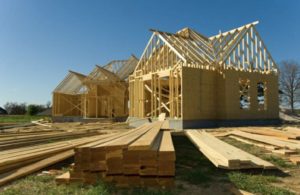 By Reginald Tucker “Residential market activity is expected to slow down somewhat in 2022, but I’m not predicting Armageddon.” That was the main point that Connor Lokar, senior forecaster with ITR Economics, drove home in his recent presentation: Construction Market Trends for 2022. The informative webinar looked at emerging financial market trends and the potential impacts for U.S. economy in the coming year.
By Reginald Tucker “Residential market activity is expected to slow down somewhat in 2022, but I’m not predicting Armageddon.” That was the main point that Connor Lokar, senior forecaster with ITR Economics, drove home in his recent presentation: Construction Market Trends for 2022. The informative webinar looked at emerging financial market trends and the potential impacts for U.S. economy in the coming year.
Following are the key highlights and takeaways from the presentation.
The red-hot U.S. market that defined much of the last six quarters is expected to see some shifting in 2022. “We’re going to see things slow down as we move to 2022,” Lokar said. “We have seen the leading indicators and factors like permit trends beginning to corroborate that outlook in the last several months. So it looks like a slowdown is very much on track.”
Among those leading indicators are gross domestic product and housing starts which—despite an anticipated slowdown on the horizon—are still moving forward. “We’re going to see a nice stable foundation,” Lokar said.
While a mild deceleration in housing activity and growth is expected to take place in 2022, Lokar said it’s important to keep things in perspective. “Folks tend to latch onto that slowing portion and loop that into negativity for next year, but that’s not what we’re calling for at ITR. We are still calling for a positive growth rate. However, it is not going to be the near 20% in starts growth that we’ve seen.”
Actually, the housing market is more likely to see growth in the low- to mid-single digit range for 2022, according to ITR Economics. “We’re forecasting 4.3% growth in single-units starts,” Lokar said. “That’s just a volume forecast, which will be about close to 1.2 million units by the end of next year. However, that still means more homes are going to be built in 2022 vs. 2021. It’s important for companies to frame that appropriately when they build their budgets and forecast and how they handle their inventory levels as we move into next year, particularly as product availability starts to improve.”
Lokar stressed the importance of not interpreting the anticipated deceleration of growth as a slowing economy. Rather, he called it a return to normalization. “We’ve been living in this accelerating growth phase for a long time—which makes it hard to remember what the statistically normal growth rates look like. I look at it as taking our foot off the accelerator, not slamming on the brakes and moving backwards, per se. Given the business-cycle rise we’ve seen over the last year and a half, it is very easy to get caught up in this and start to operate under the assumption that we’re impervious to the business cycle; we’re not impervious to a slow down.”
Another reliable barometer of the outlook on the housing market for 2022 is the rate of permits issued. The more permits issued today, ITR notes, the more building activity we will see in the coming months and into 2022. “That’s about as rock solid of a short-term leading indicator that we see,” Lokar said.
Uncertainties loom
Lokar also acknowledged that there are factors that might create an environment of uncertainty. He cited the current infrastructure bill that’s being debated. “There will likely be impacts, probably not massive, at least for next year. It could have an impact on the rollout timeframe for construction projects.
Another area of uncertainty is the confusion around the eviction moratorium. “It was temporarily extended, then it was struck down in court, and now it is proceeding,” Lokar explained. “That could have an influence on some markets.”
But perhaps the most significant ‘X’ factor, he notes, is the track of the coronavirus pandemic—specifically the delta variant. “ITR does not anticipate some COVID-19 2.0 type scenario for 2022 or some sort of falling off a cliff or backsliding into recession,” Lokar noted. “Still, we’re likely to some probable downside risk for already pressured markets.”
The good news is many of the issues that have kept executives up at night over the past 18 months—inflation, material cost pressure, material availability, longer lead times, etc.—are showing some signs of abating. “Some of those issues are getting a little easier to manage,” Lokar stated. “There’s a lot to look forward to here as we look to 2022, but folks just need to be a bit more cognizant of a downshift in growth that’s going to be on the housing side.”
All things considered, ITR Economics expects industries that are tied to the residential construction market will be just fine in 2022. “It’s a slowdown, but it is not a disaster forecast,” Lokar said. “It’s just going to look and feel a bit different next year. I think we’ll see more manageable trends from a price and supply standpoint that might make next year a bit more enjoyable.”
